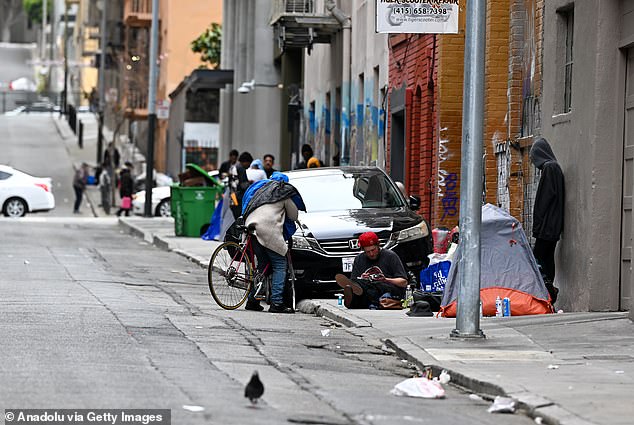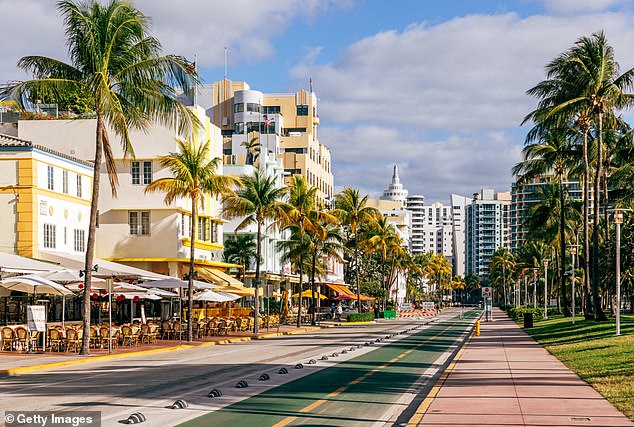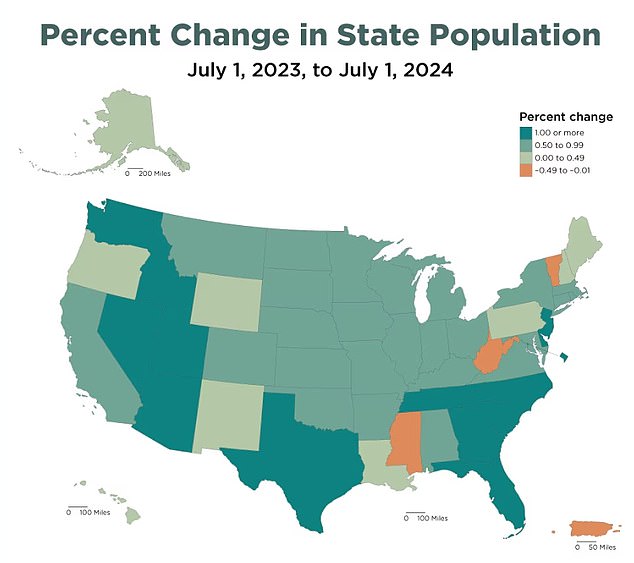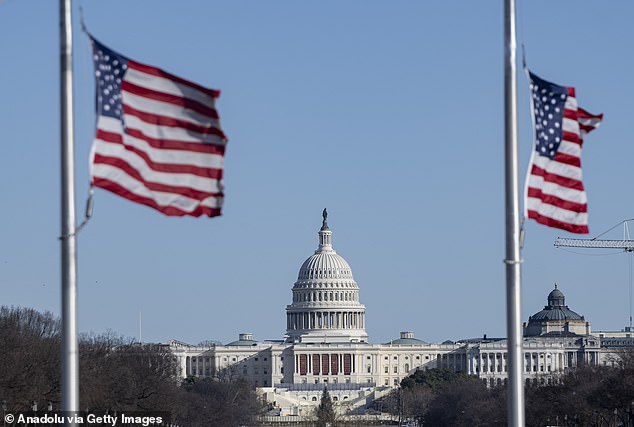The Democratic party may have shot its re-election chances in the foot by driving potential voters from blue states to red states.
Migration of residents to Republican areas has the power to reshuffle the Electoral College, as votes are distributed based on state population.
A state gets one electoral vote for each House representative and senator, and since the House is fixed at 435 seats, a loss for one state translates into a gain for the other.
While the skyrocketing cost of living is driving people out in many Dem strongholds like California and New York, populations are growing in red states, resulting in greater representation. More draconian COVID lockdowns in blue states also sent many fleeing to more relaxed Republican alternatives.
Texas, Florida and North Carolina were among the states that welcomed the most new residents.
Of the 899,481 Americans who moved out of state in 2023, 53 percent went to these three Republican states.
Meanwhile, more than 555,000 people left California and New York. According to LivingCost.com, the cost of living in these states is 1.3 and 1.5 times higher than the U.S. average, respectively.
If the trend continues, Republican states could gain twelve Electoral College votes.
The Democratic Party could risk losing control of Congress forever due to an exodus of voters from blue states like California
This is important because it would eliminate the need for Republican presidential candidates to secure swing states like Wisconsin, Pennsylvania or Michigan.
California is on track to lose four seats in the House of Representatives, while New York could lose three Boston Herald reports.
“California, New York and other slow-growing Democratic strongholds on the coasts have pursued explicitly anti-population growth policies for decades,” The Atlantic wrote.
‘They took their natural advantages for granted and assumed that prosperity was a given. People willingly giving up their homes in these coastal areas is a sign of how dismal the cost of living is.”
In addition to the crippling cost of living, many of those turning their backs on blue states have cited strict lockdown laws.
Between 2010 and 2020, Southern states were among the fastest growing in the US, a trend that was amplified during the pandemic.
Others point to failed progressive policies in blue states as a reason to leave.
According to data collected by Statista, the Democratic states of New Mexico, Colorado and Washington recorded the most crime incidents per 100,000 residents.

Migration of residents to Republican areas has the power to reshuffle the Electoral College, as votes are distributed based on state population. Pictured: San Francisco’s homelessness epidemic

Many Democratic voters are fleeing blue states to take advantage of lower taxes in a Republican stronghold like Florida

A state gets one electoral vote for each House representative and senator, and since the House is fixed at 435 seats, a loss for one state translates into a gain for another state.
California is only now beginning to reckon with the problems caused by its soft approach to justice.
In November, all of the state’s counties voted overwhelmingly in favor of Proposition 36, which includes provisions to crack down on serial shoplifters and drug users.
The legislation reversed previous statutes, which meant shoplifters who stole less than $950 could only be prosecuted with a misdemeanor, regardless of how many times they were caught.
While many Democratic voters may want to take advantage of the freedoms and lower costs of living in red states, they have been warned not to “take their politics with them.”
“Red State residents don’t care about people coming from Blue States,” bicoastal real estate agent Cara Ameer told Realtor.com. “I’ve seen resentment in Florida with slogans like ‘Don’t Fauci My Florida.’
“Some appreciate the influx of new residents because it can stimulate the local economy and bring new prospects,” added Mike Rhoads, owner of Wild North Home Offers in North Carolina. “Others, however, are concerned about the potential impact on their communities and the possible changes in political dynamics.”


